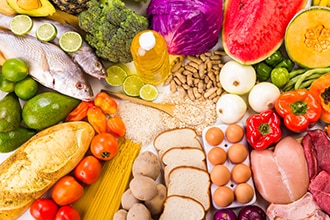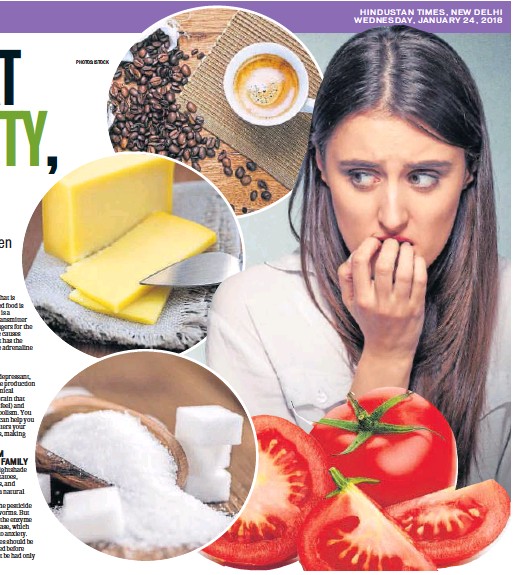
Foodborne illness outbreaks are almost always preventable. However, there are some things you can do to minimize your risk. Hand hygiene can be reduced by washing your hands well before handling any food. This will help prevent pathogens from spreading to other foods. Wash your hands with soap water for 20 seconds. Check to ensure that the food you are eating is cooked properly if you are dining out. You can throw away any dish that you are unsure about.
It is important to be safe and healthy when you eat. Food poisoning is possible if you consume raw meat, poultry and eggs. Avoid eating raw meat, poultry, eggs, shellfish and seafood to avoid food poisoning. It is important to wash vegetables and fruits before using them. You may be able to receive a virtual doctor appointment free of charge within 15 minutes of eating.
In addition to washing your hands thoroughly, be aware of the temperature of the food you're eating. Raw meat, fish, and poultry can contain harmful bacteria and toxins. For harmful pathogens to be eliminated, make sure your dishes are cooked thoroughly. Ask for a different plate if you are unsure. Make sure to thoroughly wash your hands after you prepare food at a restaurant. Refrigerate perishable items immediately. If you're not sure what symptoms to expect, visit your emergency room or urgent care center.

You should wash your hands frequently and avoid touching food. A lot of bacteria and viruses can be introduced into food by the process of manufacturing it. These bacteria could be introduced to food by the people who grow it in their kitchens or farms. Handling food can also spread germs. Even the freshest foods can be contaminated. You need to keep these points in mind and practice good hygiene. This will help to prevent food poisoning.
The symptoms of food poisoning vary from mild to severe. The symptoms of food poisoning can appear immediately or take several hours. Also, it is important to wash your hands when handling raw meat. It's best to avoid placing raw meat on the counter or in sinks. This will increase your risk of getting the bacteria and food poisoning. However, if you have already consumed the food, then you're still at high risk for getting it from somewhere.
It is important to wash your hands thoroughly to avoid food poisoning. It is important to wash your hands properly and avoid eating raw meats and dairy products. It's also important to avoid touching foods that have been cooked for a long time. When you prepare meat, bacteria can survive longer on your hands. It's important to wash your hands thoroughly before you consume it.
Refrigerated and frozen food are best. Washing fruits and vegetables properly is a must. Cooking requires that you wash all fruits and vegetables. These foods may contain bacteria. Wash them thoroughly before you start to prepare them. You can prepare them best with a towel or cloth made of paper. A kitchen mat is a great place to store your food.

You are at risk of food poisoning if you eat out. Make sure to eat at a trusted restaurant and get a good steak. Avoid preparing your food yourself if you are cooking at home. It's impossible to be sure that your food will be safe. Also, ensure your food is cooked correctly and checked for signs of bacteria contamination.
Food poisoning symptoms include vomiting, diarrhea, cramps, and abdominal cramps. These symptoms may appear several hours after eating, but they usually pass on their own. If you've had any recent travel, make sure you pack your food in a cooler or insulated plastic bag. When you're traveling by car, make sure you're in an air-conditioned vehicle. Water is a good option if you are on a tight budget. It will keep you hydrated while preventing salmonella.
FAQ
Why do we need to have a healthy lifestyle?
Healthy living can lead to a longer, more fulfilling life. A healthy diet, regular exercise and good sleep habits will prevent the development of diseases such as heart disease, stroke, cancer, diabetes, and Alzheimer's.
Healthy lifestyles will help us to cope with daily stresses better and improve our mental health. Having a healthy lifestyle will also boost our self confidence and help us look and feel younger.
How does weight change with age?
How can you tell if your bodyweight has changed?
Weight loss occurs when there is less fat than muscle mass. This means that calories must be consumed at a rate greater than energy. Activity levels are the most common reason for weight loss. Other factors include stress, illness and pregnancy. A person who has more fat than their muscle mass will experience weight gain. It occurs when people consume more calories each day than they use. It can be caused by overeating or increased physical activity as well hormonal changes.
Our bodies lose weight because we eat fewer calories than we burn. By exercising regularly, our metabolism rates increase which in turn burns more calories during the day. However, this doesn't mean that we'll necessarily get thinner; what matters is whether or not we're losing fat or gaining muscle. If we are burning more calories than what we eat, then we will lose weight. But, if we consume far more calories than what we burn, then we actually store them as fat.
As we age, we become less agile and don't move as often. We also tend have less food to eat than when our children were young. As a result, we gain weight. On the flip side, we tend to have more muscle mass so we look bigger than we really are.
Without weighing yourself each week, there is no way to know how much weight you have lost. There are many methods to measure your weight. There are many ways to measure your weight. You can check your waist, hips, thighs, arms and legs. Some people prefer to use bathroom scales while others like to use tape measures.
Track your progress by measuring your waistline and weighing yourself every week. You can also take photos of your self every few months to track how far you've come.
Online measurements of your height and weight can help you determine your body mass. For example, if you're 5'10" tall and weigh 180 pounds, you'd probably weigh 180 pounds.
What are the 7 tips to have a healthy life?
-
Be healthy
-
Exercise regularly
-
Good sleep
-
Make sure to drink plenty of water.
-
Get enough sleep
-
Be happy
-
Smile often
What's the difference between a calorie and kilocalorie?
Calories refer to units that are used for measuring the energy in food. Calories are a unit of measurement. One calorie is the amount of energy required to heat one gram water one degree Celsius.
Kilocalories refer to calories in another term. Kilocalories equal one thousandth of a calorie. For example, 1000 calories equals one kilocalorie.
How to measure body fat?
A Body Fat Analyzer is the best way to measure body weight. These devices are used for measuring the percentage of body fat in people who want to lose weight.
Exercise: Is it good or bad for immunity?
Exercise is good exercise for your immune system. Exercise boosts the production of white blood cells, which can fight off infections. You can also eliminate toxins from the body. Exercise is a great way to prevent heart disease, cancer, and other diseases. It reduces stress.
Exercising too often can cause your immune system to be weaker. Exercising too hard can make your muscles sore. This can cause inflammation as well as swelling. The body then needs to make more antibodies to fight infection. However, these antibodies can also cause allergic reactions and autoimmune diseases.
So, don't overdo it!
What is the difference among a virus or a bacterium and what are their differences?
A virus is an organism microscopic that can't reproduce outside its host cells. A bacterium can be described as a single-celled organism which reproduces by splitting in two. Viruses can be as small as 20 nanometers, while bacteria can grow up to 1 micron.
Viruses spread easily through contact with infected bodily tissues, such as saliva and urine, semen, vaginal secretions or pus. Bacteria can be spread by direct contact with infected objects and surfaces.
Viral infections can be transmitted through skin cuts, scrapes and bites. They can also enter the body through the mouth, nose, eyes and ears, vaginal, rectum or anus.
Bacteria can enter our bodies through wounds, cuts, scrapes, burns, insect stings, or other breaks in our skin. They may also be introduced into our bodies through food and water as well as soil, dirt, dust, and animals.
Both bacteria as well as viruses can cause illness. However, viruses cannot reproduce within their hosts. So they only cause illnesses when they infect living cells.
Bacteria can cause illness by multiplying in the body. They can spread to other parts of our bodies. To kill them, we must use antibiotics.
Statistics
- WHO recommends reducing saturated fats to less than 10% of total energy intake; reducing trans-fats to less than 1% of total energy intake; and replacing both saturated fats and trans-fats to unsaturated fats. (who.int)
- In both adults and children, the intake of free sugars should be reduced to less than 10% of total energy intake. (who.int)
- WHO recommends consuming less than 5% of total energy intake for additional health benefits. (who.int)
- This article received 11 testimonials and 86% of readers who voted found it helpful, earning it our reader-approved status. (wikihow.com)
External Links
How To
What does the term "vitamins" mean?
Vitamins are organic compounds naturally found in food. Vitamins help us absorb nutrients from foods we eat. The body cannot make vitamins; therefore, they must be obtained from food.
There are two types if vitamins: water soluble, and fat soluble. Water-soluble vitamins dissolve quickly in water. Vitamin C,B1(thiamine), B2 (2riboflavin), and B3 (3niacin), as well as vitamin C,B1, B2 (riboflavin), and B3 (niacin), vitamin B6 (pyridoxine), vitamin folic acid (biotin), pantothenic, and choline are examples. Fat-soluble vitamins can be stored in the liver or in fatty tissue. Vitamin D, E, K and A are some examples.
Vitamins can be classified by their biological activity. There are eight major groups of vitamins:
-
A - Essential for healthy growth and health maintenance.
-
C is important for nerve function and energy production.
-
D – Essential for healthy teeth, bones and joints
-
E - Required for good vision & reproduction
-
K - Required for healthy nerves and muscles.
-
P – vital for building strong bones.
-
Q – aids digestion of iron and iron absorption
-
R is required for the production of red blood cells.
The recommended daily allowance (RDA) of vitamins varies depending on age, gender, and physical condition. RDA values are set by the U.S. Food and Drug Administration (FDA).
For adults aged 19 and older, the RDA for vitamin B is 400 micrograms daily. For fetal development, pregnant women need 600 mg per day. Children ages 1-8 require 900 micrograms per day. For infants younger than one year, 700 micrograms are required daily. However, this number drops to 500 micrograms each day for children aged 9-12 months.
Children aged 1-18 years need 800 micrograms daily, while children overweight require 1000 micrograms per days. Children who are severely obese or underweight will need 1200 micrograms each day.
2200 mg of vitamin A per day is required for children aged 4-8 who have been diagnosed by anemia.
2000 micrograms daily is required for adults over 50 to maintain their general health. Breastfeeding or pregnant women require 3000 micrograms per daily due to higher nutrient demands.
Adults over 70 years of age need 1500 micrograms per day since they lose about 10% of their muscle mass each decade.
Women who have been pregnant or are lactating require more than the RDA. Pregnant and breastfeeding women require 4000 micrograms each day during pregnancy and 2500 Micrograms each day after delivery. Breastfeeding mothers require 5000 micrograms daily when breast milk production is occurring.